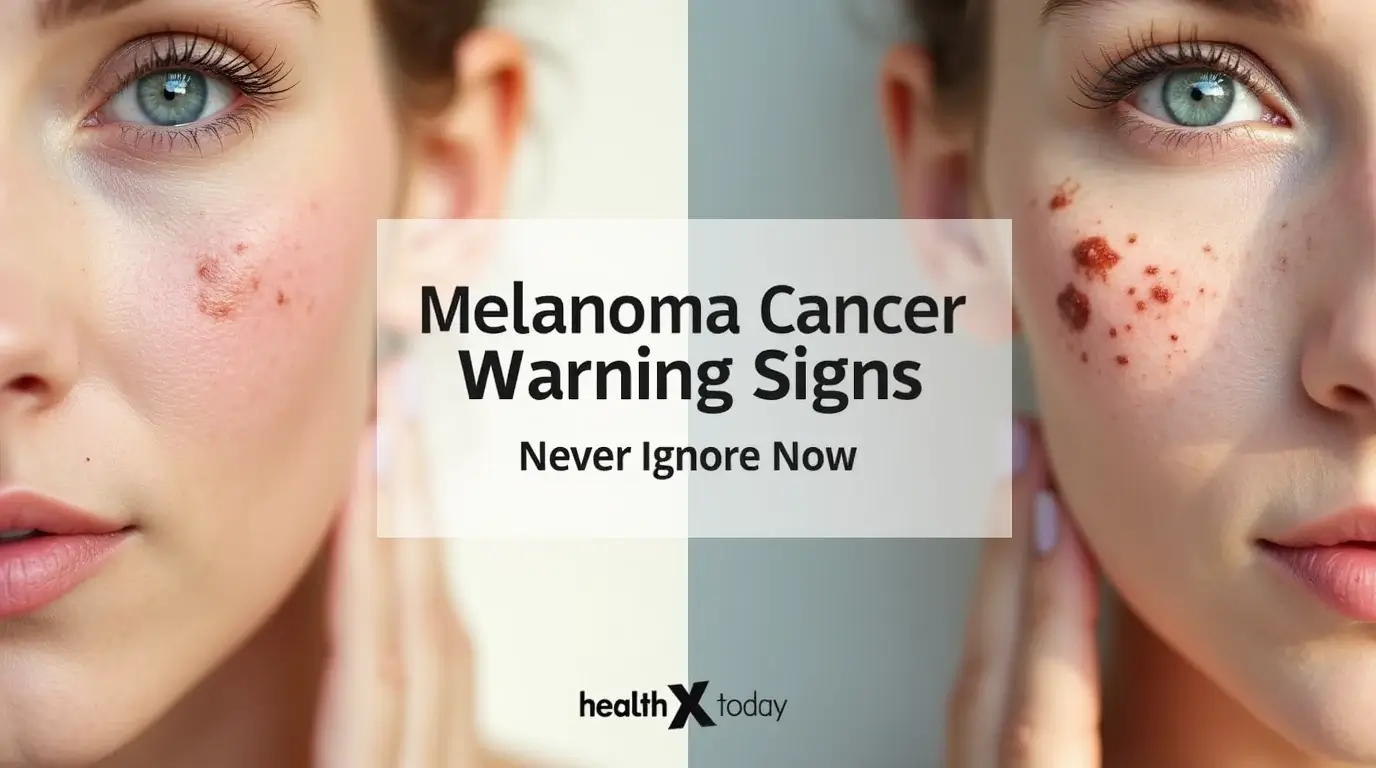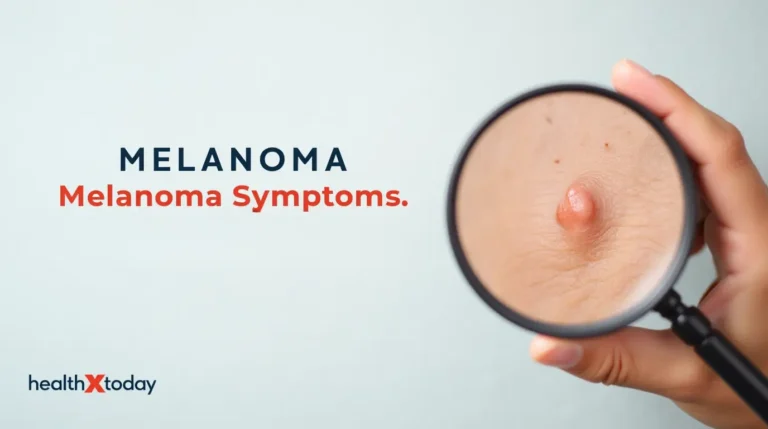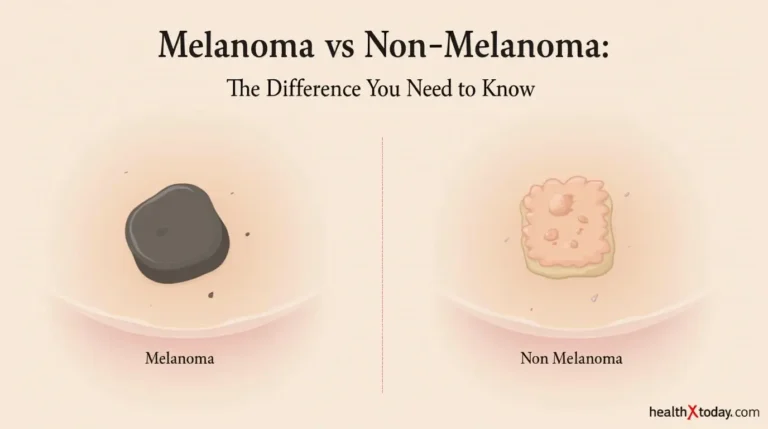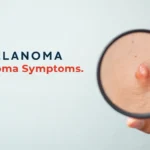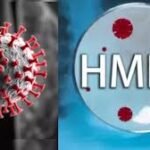We envision a world where everyone has the tools and knowledge to live a balanced, healthy, and fulfilling life. By providing reliable resources, personalized programs, and community support, we aim to be a beacon of hope for those on their health journey.
Table of Contents
What is Melanoma?
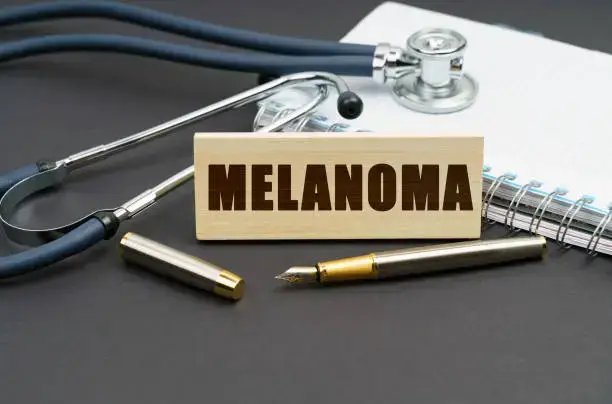
Melanoma Cancer
Melanoma is a serious form of skin cancer that originates in the melanocytes, the cells responsible for producing melanin, which gives skin its color. While it accounts for only a small percentage of skin cancer cases, melanoma is known for its aggressive nature and the potential for metastasis, meaning it can spread to other parts of the body if not detected and treated promptly. There are several types of melanoma, with the most common being superficial spreading melanoma, nodular melanoma, lentigo maligna melanoma, and acral lentiginous melanoma. Each type exhibits distinct characteristics and patterns of growth, but they all pose significant health risks.
Unlike other skin cancers such as basal cell carcinoma and squamous cell carcinoma, which are generally less aggressive and have a lower likelihood of spreading, melanoma is more invasive. This distinction is crucial for both diagnosis and treatment, as patients with melanoma may require more intensive measures to manage their condition. One of the most alarming aspects of melanoma is its ability to appear in areas of the skin that have not been subjected to significant sun exposure, making it essential for individuals to be vigilant about skin examinations regardless of their sun habits.
Risk factors for developing melanoma include a history of sunburns, excessive UV exposure from both natural sunlight and artificial sources such as tanning beds, genetic predispositions, and the presence of atypical moles. Individuals with fair skin, light hair, and light eyes are particularly vulnerable, but melanoma can affect anyone. Regular skin checks and awareness of the ABCDEs of melanoma—Asymmetry, Border, Color, Diameter, and Evolution—are essential for early detection and successful treatment outcomes.
Causes and Risk Factors
Melanoma, a serious form of skin cancer, arises from melanocytes, the cells responsible for producing melanin. Understanding the causes and risk factors associated with melanoma is crucial in prevention and early detection. One of the most significant risk factors is ultraviolet (UV) radiation exposure, which can result from natural sunlight or artificial sources such as tanning beds. Prolonged and unprotected exposure to UV rays can damage the skin, leading to mutations in the DNA of melanocytes, ultimately increasing the likelihood of developing melanoma.
In addition to UV exposure, genetic predispositions play a pivotal role in the development of melanoma. Individuals with a family history of skin cancer may possess inherited genetic mutations that elevate their risk. For instance, mutations in the CDKN2A gene have been linked to familial melanoma, indicating that hereditary factors cannot be overlooked when assessing one’s risk.
Demographic factors also contribute significantly to the likelihood of developing melanoma. Research indicates that the incidence of melanoma is higher among men compared to women, particularly in older age groups. This discrepancy may be attributed to behavioral factors, such as differing rates of sun exposure and outdoor activities. Additionally, skin type is a critical risk factor; individuals with fair skin, light hair, and light eyes tend to have a higher risk of melanoma due to lower levels of melanin, which offers reduced protection against UV radiation.
Lifestyle choices also impact the risk of melanoma. Frequent use of tanning beds has been identified as a considerable risk factor, especially among younger individuals. Such practices increase UV exposure significantly and compromise the skin’s natural defense against the harmful effects of sunlight. By understanding these causes and risk factors associated with melanoma, individuals can take proactive steps to safeguard their skin health.
Signs and Symptoms of Melanoma

Melanoma, a severe form of skin cancer, often manifests through specific signs and symptoms that can help in its early detection. One of the most effective tools for identifying potential melanoma is the ABCDE rule. This guideline categorizes the characteristics of moles and skin changes that warrant attention.
Asymmetry refers to a mole that does not have uniform shape when divided in half. A normal mole is typically symmetrical, while an asymmetrical shape may indicate potential melanoma. Additionally, the Border is another crucial factor; healthy moles usually have smooth, even edges, whereas cancerous moles may have irregular, ragged, or blurred borders.
Color is the third aspect outlined in the ABCDE rule. Moles that exhibit an array of colors, such as shades of brown, black, tan, red, white, or blue, should raise concern. The Diameter of moles also plays a key role in identification. Moles larger than 6mm, which is roughly the size of a pencil eraser, should be closely monitored for changes. Finally, the Evolving characteristic emphasizes the importance of tracking changes in moles over time. Any alteration in size, shape, color, or elevation, or the development of new symptoms, is reason enough to seek a professional evaluation.
In addition to the ABCDE criteria, other warning signs of melanoma include the appearance of new moles, itchiness, bleeding, or crusting that doesn’t heal, as well as changes in the skin’s texture. Individuals with fair skin, a family history of melanoma, or a high number of moles should remain particularly vigilant. Regular skin examinations, either self-administered or by a healthcare professional, are instrumental in the early detection of melanoma, significantly increasing the likelihood of effective treatment outcomes.
How Melanoma is Diagnosed
The diagnosis of melanoma cancer is a multifaceted process that includes thorough physical examinations and various diagnostic techniques. Initially, healthcare professionals conduct a comprehensive skin examination to check for any unusual moles or skin changes. They evaluate characteristics such as the color, size, shape, and overall appearance of these lesions, as well as the presence of discomfort or bleeding. Any abnormal findings can prompt further investigation, which is critical for an accurate melanoma diagnosis.
One of the key tools in the diagnostic process is dermatoscopy, a non-invasive technique that employs a specialized device called a dermatoscope. This device allows healthcare providers to observe the skin at a deeper level, facilitating the detailed examination of moles and lesions. By employing dermatoscopy, clinicians can distinguish between benign and malignant lesions with greater accuracy, thereby reducing the chance of misdiagnosis.
If the initial examination raises suspicion of melanoma, a biopsy is often performed to obtain a definitive diagnosis. There are several biopsy methods, including excisional biopsy and punch biopsy. An excisional biopsy involves the complete removal of the suspicious lesion and a margin of surrounding healthy tissue, which allows for a comprehensive evaluation by a pathologist. Alternatively, in a punch biopsy, a small cylindrical sample of skin is removed and examined. Both methods are essential in confirming whether melanoma is present, and the choice of technique generally depends on the size and location of the lesion.
Through the combination of physical exams, dermatoscopic evaluations, and biopsy methods, healthcare professionals can establish a reliable diagnosis of melanoma cancer. Early detection is crucial, as it significantly influences treatment options and patient outcomes.
Staging of Melanoma

The staging of melanoma is crucial for determining the appropriate treatment strategy and understanding the patient’s prognosis. The most widely utilized system for staging melanoma is the TNM classification system, developed by the American Joint Committee on Cancer (AJCC). This system evaluates three key components: Tumor (T), Node (N), and Metastasis (M), which together provide a comprehensive overview of the disease’s progression.
The ‘Tumor’ component assesses the size and extent of the primary melanoma. It is graded from T1 to T4, with T1 indicating a thinner tumor (<1 mm) and T4 representing a thicker tumor (>4 mm). This categorization helps in gauging the invasiveness of the tumor and its potential to spread. The ‘Node’ element focuses on the presence of cancer in nearby lymph nodes, categorized as N0 (no lymph node involvement) to N3 (multiple lymph nodes affected). This assessment is vital since lymphatic dissemination often marks a significant turning point in melanoma’s progression.
Lastly, the ‘Metastasis’ classification determines whether the melanoma has spread to distant organs, marked as M0 (no distant metastasis) and M1 (distant metastasis is present). Staging melanoma using the TNM system significantly impacts treatment decisions. For example, early-stage melanomas (stages I and II) may be managed with surgical excision techniques, while more advanced stages (III and IV) may require systemic therapies, such as immunotherapy or targeted treatments.
Furthermore, accurate staging informs the prognosis for individuals with melanoma. Patients with localized disease often have a higher survival rate compared to those with advanced disease. Thus, the staging process plays an integral role in fostering more tailored and effective treatment plans, enhancing the likelihood of positive outcomes for those diagnosed with melanoma.
Treatment Options for Melanoma
Melanoma, a type of skin cancer originating from melanocytes, requires a multifaceted approach for effective management. Treatment modalities often vary based on the stage of the disease, its location, and the overall health of the patient. Key treatment options include surgery, immunotherapy, targeted therapy, and radiation therapy.
Surgery is typically the first-line treatment for localized melanoma. The procedure involves the removal of the tumor along with some surrounding healthy tissue to ensure that all cancerous cells are excised. For thicker melanomas, sentinel lymph node biopsy may be performed to assess whether cancer has spread to lymph nodes. This surgical intervention is crucial for preventing recurrence.
Immunotherapy harnesses the body’s immune system to fight cancer. This innovative approach has gained significant traction in recent years, particularly for advanced melanoma. Agents such as checkpoint inhibitors have shown promising results, helping to enhance the immune response against melanoma cells. Patients receiving immunotherapy may experience long-term benefits, making it a vital option in melanoma management.
Targeted therapy, on the other hand, focuses on specific genetic mutations associated with melanoma. Treatments like BRAF and MEK inhibitors are effective for patients whose tumors harbor specific mutations. These medications target the pathways that allow melanoma to grow, offering a more personalized treatment option. This targeted approach not only improves treatment outcomes but also minimizes damage to healthy tissues.
Additionally, radiation therapy can play a role, especially for melanoma that has spread to other areas, such as the brain. This technique uses high-energy rays to kill cancer cells and is often utilized in conjunction with other treatments. Clinical trials are ongoing, exploring new and emerging therapies that may provide additional options for patients. These trials are essential for advancing melanoma treatment, offering potential access to cutting-edge therapies that may not yet be widely available.
Preventive Measures for Melanoma

Melanoma, a serious form of skin cancer, significantly arises from UV radiation exposure. Therefore, implementing effective preventive strategies is imperative in reducing the risk of developing melanoma. One of the foremost preventive measures is consistent sun protection. This involves using broad-spectrum sunscreens with a high SPF, applying it generously on all exposed skin, and reapplying every two hours, especially after swimming or sweating. Wearing protective clothing, such as wide-brimmed hats and long-sleeved shirts, can also provide an additional layer of defense against harmful UV rays.
Moreover, seeking shade during peak sun hours, typically between 10 a.m. and 4 p.m., can minimize direct sun exposure. It is essential to note that tanning beds are a significant source of UV radiation and should be avoided at all costs to further reduce the potential risk of melanoma.
Another crucial aspect of melanoma prevention involves regular skin checks. Individuals are encouraged to perform self-examinations monthly, systematically checking for any new or changing moles, spots, or skin lesions. Early detection is vital in dermatology, as identifying melanoma in its initial stages significantly enhances treatment outcomes. Dermatologists recommend scheduling professional skin examinations annually or biannually, especially for those with a family history of skin cancer or other risk factors.
In addition to sun protection and skin checks, lifestyle modifications play a vital role in maintaining skin health. Consuming a balanced diet rich in antioxidants, such as fruits and vegetables, can promote overall skin health. Staying hydrated, managing stress levels, and avoiding smoking can also contribute to skin resilience. melanoma cancer; By adopting these preventive measures, individuals can lower their risk of melanoma while promoting better skin health in the long term.
Living with Melanoma: Resources and Support
Living with melanoma can be an emotionally challenging journey for both patients and their families. melanoma cancer; It is important to acknowledge the psychological impact that a melanoma diagnosis can have, as it often prompts feelings of anxiety, uncertainty, and fear. melanoma cancer; Therefore, seeking appropriate resources and support systems is crucial for managing these emotional hurdles effectively.
One of the main resources available to melanoma patients and their loved ones is support groups. melanoma cancer; These groups provide a safe environment for individuals to share their experiences, feelings, and concerns with others who are going through similar challenges. melanoma cancer; Many hospitals and cancer centers offer support group sessions, which can be led by trained facilitators or peer mentors. melanoma cancer; Additionally, organizations such as the Melanoma Research Foundation often provide online forums where individuals can connect, share stories, and seek advice from others dealing with similar situations.
Counseling services are another invaluable resource. melanoma cancer; Mental health professionals specializing in oncology can help melanoma patients cope with the emotional toll of their illness. Through individual or family therapy, patients can explore their feelings, develop coping strategies, and improve their overall well-being. melanoma cancer; For individuals who may feel hesitant to seek in-person counseling, telehealth options are increasingly available, allowing for remote sessions from the comfort of one’s home.
Informational websites also serve as essential tools for both patients and caregivers. melanoma cancer; Web sites such as the American Cancer Society and other reputable organizations provide a wealth of knowledge about melanoma, including treatment options, coping mechanisms, and lifestyle adjustments. melanoma cancer; Access to credible information can empower patients, helping them make informed decisions regarding their health. melanoma cancer; By utilizing these resources and support systems, individuals battling melanoma can foster resilience and navigate their cancer journey more effectively.
Future Directions in Melanoma Research
The landscape of melanoma research is constantly evolving, driven by the urgent need for more effective treatments and better patient outcomes. melanoma cancer; Recent advancements have paved the way for novel therapies that demonstrate promise in treating this aggressive form of skin cancer. melanoma cancer; One such approach is immunotherapy, which harnesses the body’s immune system to combat cancer cells. melanoma cancer; Immune checkpoint inhibitors, such as pembrolizumab and nivolumab, have shown significant efficacy in advanced melanoma cases, leading to improved survival rates for many patients. melanoma cancer; Ongoing studies continue to explore combination therapies that integrate these inhibitors with other treatment modalities to enhance their effectiveness.
Another exciting area of melanoma research is the application of personalized medicine. melanoma cancer; This approach tailors treatment based on the genetic makeup of the individual and the specific characteristics of their melanoma. melanoma cancer; By understanding the molecular and genetic profiles of tumors, researchers can identify targeted therapies that are more effective and cause fewer side effects than traditional treatments. melanoma cancer; For example, BRAF and MEK inhibitors are demonstrating strong results in patients with specific genetic mutations, providing a clearer path towards personalized options for melanoma treatment.
Furthermore, the importance of ongoing education and awareness campaigns cannot be overstated. melanoma cancer; As the incidence of melanoma rises, it is crucial to raise public awareness about prevention and early detection. melanoma cancer; Knowledge programs aimed at educating individuals on the importance of skin checks and recognizing the early signs of melanoma can lead to earlier diagnoses and, consequently, better treatment outcomes. melanoma cancer; Collaborative efforts between researchers, healthcare providers, and advocacy groups are vital in promoting skin health and advancing melanoma research. melanoma cancer; Through unified initiatives, the future of melanoma treatment appears promising, with advancements continuously shaping the way we understand and manage this formidable disease.
Did You Try this tips ?
There are no reviews yet. Be the first one to write one.
blood work brain health cancer treatment climate health diabetes treatments digestive health disease management disease mapping exercise plan fitness tips hair care hair growth hair treatment headache treatment health apps health foods health insurance health secrets health tips healthy habits healthy recipes heart disease heart health home workouts immune boost immune foods keto delivery lifestyle diseases medicine innovation melanoma treatment mental health morning exercise natural remedies non melanoma nutritional advice raw nutrition skin cancer skin care skin health sleep exercise sleep technology telemedicine services viral threats walking benefits weight loss
Melanoma Cancer Warning Signs Never Ignore now 101
Melanoma is a serious form of skin cancer that originates in the melanocytes, the cells responsible for producing melanin, which gives skin its color. While it accounts for only a small percentage of skin cancer cases, melanoma is known for its aggressive nature and the potential for metastasis, meaning it can spread to other parts of the body if not detected and treated promptly. There are several types of melanoma, with the most common being superficial spreading melanoma, nodular melanoma, lentigo maligna melanoma, and acral lentiginous melanoma. Each type exhibits distinct characteristics and patterns of growth, but they all pose significant health risks.
